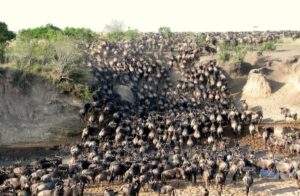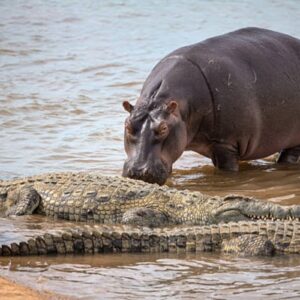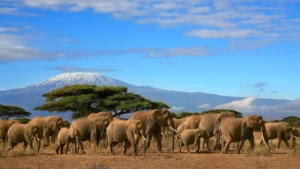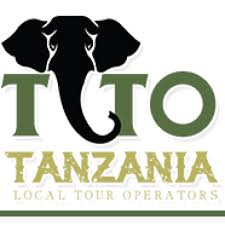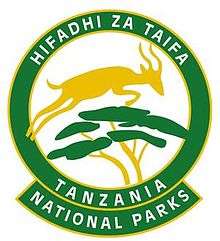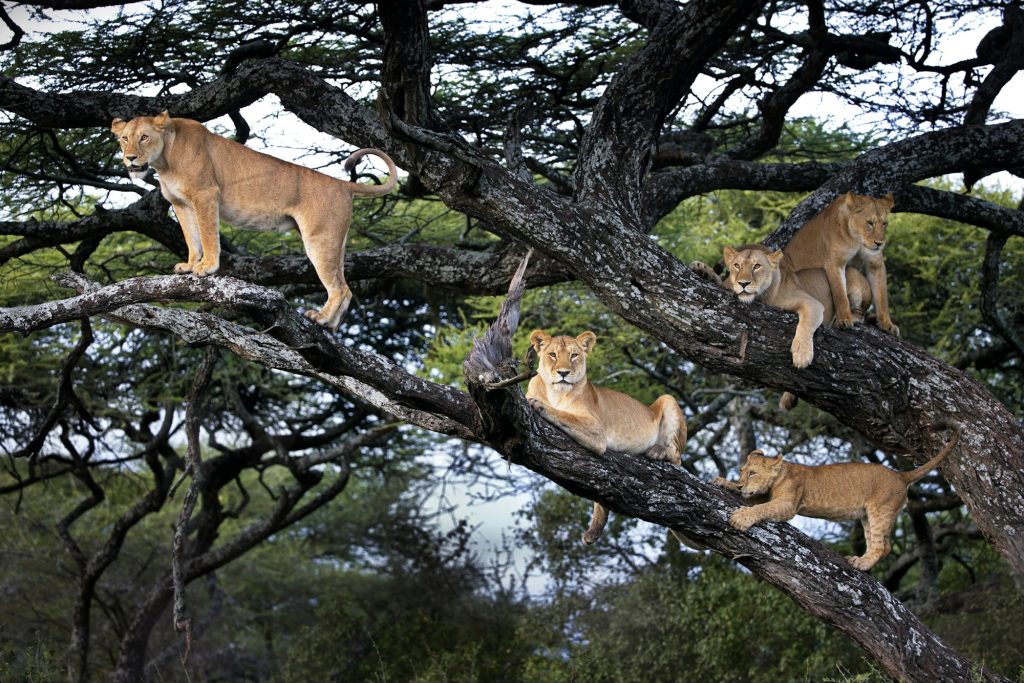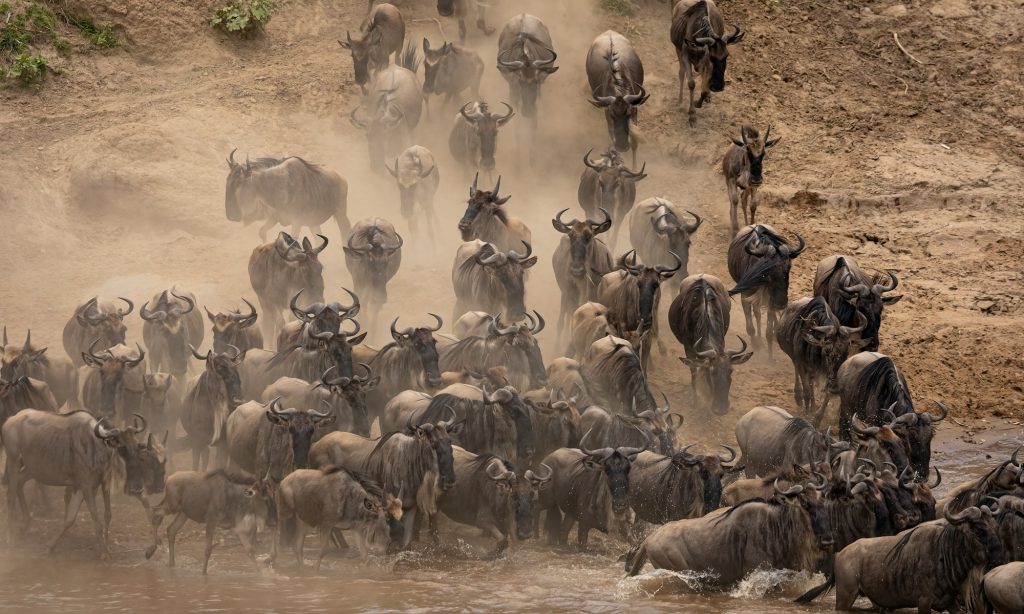Great Migration Safari: Witness Nature’s Most Spectacular Wildlife Journey
Great Migration Safari trips and tours offer a unique way to experience the breathtaking spectacle of wildlife moving across vast landscapes. These journeys often take place in iconic locations like the Serengeti or Maasai Mara, where every year millions of wildebeest, zebras, and other animals traverse the plains in search of fresh grazing grounds.
Travelers join guided Great Migration Safari expeditions that provide insights into animal behavior and ecosystem dynamics, allowing up-close glimpses of this incredible movement. These safaris offer a deeper understanding of the natural world and the delicate balance of these ecosystems.
Participants can enjoy camping under starlit skies or staying in cozy lodges, creating opportunities to unwind and share stories with fellow adventurers at night. The combination of thrilling game drives during the day and serene evenings creates unforgettable memories that last a lifetime.
A Great Migration Safari not only enriches one’s understanding of nature but also supports local economies through responsible tourism practices. It’s a remarkable way to connect with wildlife and contribute positively to the communities that call these regions home.
What is a Migration Safari?
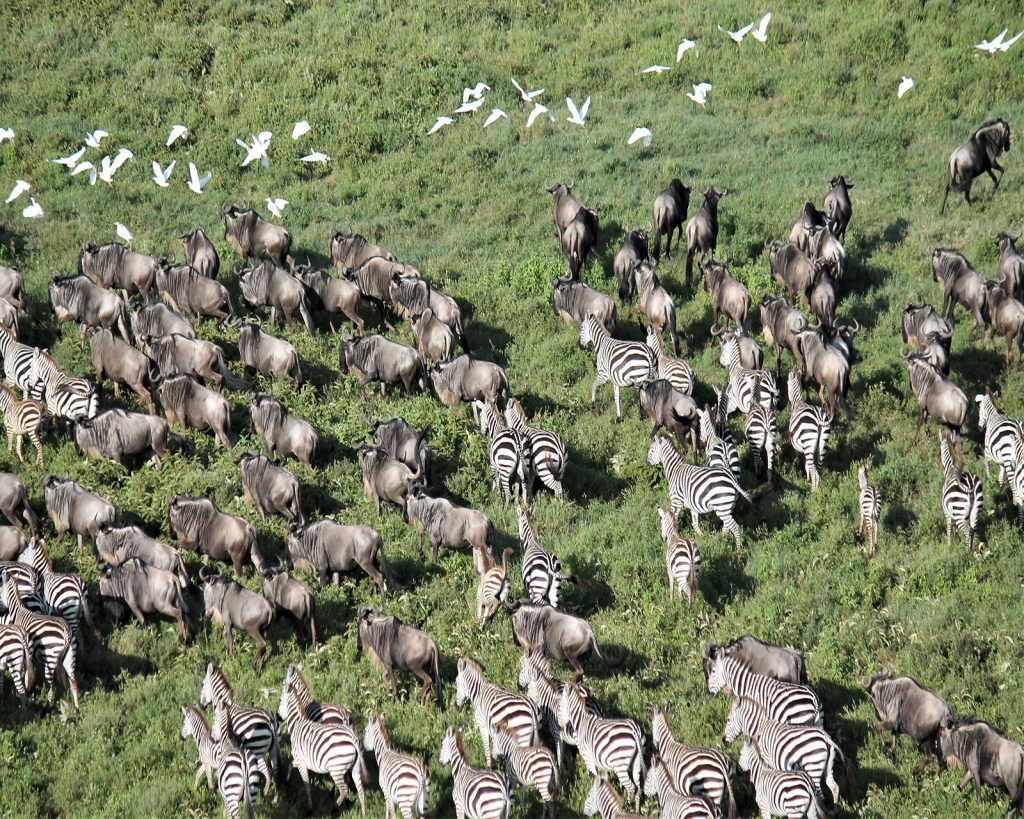
A Migration Safari is a unique adventure that takes travelers into the heart of the Serengeti-Mara ecosystem to witness the breathtaking spectacle of the Great Migration. This event is an extraordinary movement of over two million animals, including wildebeest, zebras, and gazelles, as they journey between Tanzania’s Serengeti National Park and Kenya’s Maasai Mara National Reserve. Driven by the search for fresh grazing and water, these animals follow a path dictated by seasonal rainfall patterns. Along their route, they face numerous challenges, not least from the predators like lions, cheetahs, and crocodiles that lie in wait, adding a thrilling drama to the experience.
Visitors on a Migration Safari can observe a variety of wildlife interactions and behaviors. One of the highlights is witnessing the dramatic river crossings at the Mara and Grumeti rivers, where animals brave turbulent waters teeming with crocodiles. The safari experience can be tailored to different preferences, with options for game drives, walking safaris, or even hot air balloon rides providing different perspectives of the spectacle.
Accommodations cater to all tastes, from luxury lodges offering comfort and style, to mobile camps that move with the migration, providing an immersive experience. The best time to witness this natural wonder varies, with different phases of the migration visible from June to October, ensuring there’s always something remarkable to see.
The Wildebeest Migration
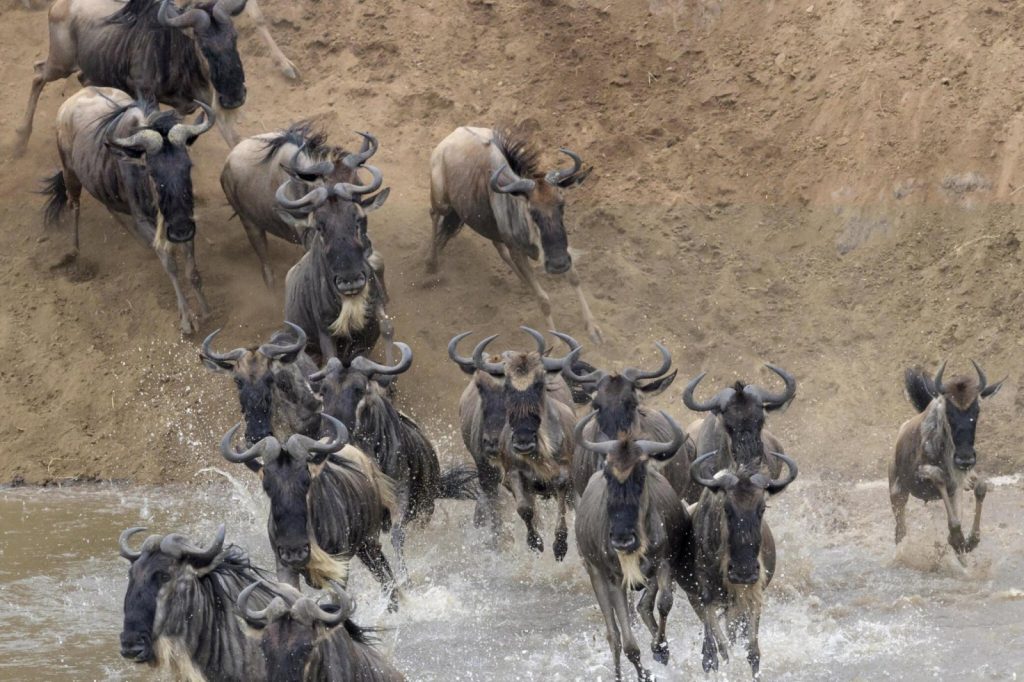
The Great Wildebeest Migration is a breathtaking spectacle, involving approximately 1.5 million wildebeests, 200,000 zebras, and 300,000 gazelles. This epic journey starts in the southern Serengeti, where the herds give birth to their young between January and March. As the dry season begins, from April to June, the animals move northward, bravely crossing the Grumeti River, which is infamous for its large and hungry crocodile population.
The adventure continues in July and August as the herds reach the northern Serengeti, preparing for the perilous Mara River crossing into the Maasai Mara. This crossing is one of the most dramatic events, with predators lurking and swift currents challenging the animals’ survival. By September, the herds spread across the Maasai Mara, grazing and gaining strength for their return journey.
In October and November, as rains return to the southern Serengeti, the animals begin their journey back south. This migration plays a crucial role in the ecosystem, helping with nutrient cycling and supporting predator populations. It also holds significant importance for the region’s tourism, drawing thousands of visitors eager to witness this natural wonder each year.
| Month | Migration Stage | Location | Activities |
|---|---|---|---|
| January-March | Calving Season | Southern Serengeti | Game drives, Calving viewing |
| April-June | Northward Movement | Grumeti River | River crossings, Game drives |
| July-August | River Crossing | Northern Serengeti, Maasai Mara | Mara River crossing, Game drives |
| September | Grazing | Maasai Mara | Game drives, Predator viewing |
| October-November | Return South | Southern Serengeti | Game drives, Rainfall viewing |
The Experience of a Lifetime
Witnessing the migration is truly the experience of a lifetime, offering a front-row seat to one of nature’s greatest spectacles. The massive herds of wildebeest, zebras, and other animals create a breathtaking scene, while the constant drama of predator-prey interactions leaves a lasting impression.
Game drives bring you up close to the action, allowing intimate encounters with wildlife in their stunning natural surroundings. For a different perspective, hot air balloon safaris provide a panoramic view of the landscape and the migration below, capturing the vastness of the savannah.
Guided walking safaris add a personal touch, as expert guides share their knowledge and passion for the land and its inhabitants. Cultural exchanges with the Maasai people further enrich the journey, offering insight into their traditions and way of life.
Photographers find endless inspiration in the dynamic scenes, capturing moments that tell stories beyond words. The safari experience is not only about adventure but also about contributing to conservation efforts that protect these incredible ecosystems.
Luxury lodges and mobile camps ensure comfort and proximity to the wildlife, enhancing every moment spent in this extraordinary environment. Night game drives unveil the mysteries of the African night, offering encounters with elusive nocturnal creatures.
This blend of adventure, culture, and conservation makes a migration safari an unforgettable adventure, etched in memories forever.
Daily Activities on Safari
Embarking on a migration safari, a typical day is filled with exciting activities designed to immerse you in the wonders of the wild. The adventure begins with an early morning game drive, the perfect time to witness animals in their natural habitat as they are most active during these hours. The soft morning light also offers an ideal setting for photography enthusiasts. After the invigorating drive, breakfast is often served in the bush, allowing you to savor a meal while soaking in the breathtaking surroundings and possibly spotting more wildlife.
As the sun climbs higher, the midday heat encourages both humans and animals to seek shade. This is an ideal time to relax at the lodge or camp, perhaps taking a dip in the pool or enjoying a good book. As the afternoon unfolds and temperatures cool, another game drive is on the agenda, providing renewed opportunities to observe the vibrant wildlife.
A cherished tradition on safari is the sundowner, where you can enjoy a refreshing drink while watching the stunning sunset over the savannah. Some safaris offer evening game drives, a chance to explore the nocturnal activities of the bush. For those interested in a more intimate connection with nature, bush walks with a knowledgeable guide reveal insights into the smaller creatures and diverse plant life of the region.
Cultural visits to local villages or Maasai homesteads offer an enriching experience, providing a window into traditional lifestyles and customs. As night falls, dining under the stars becomes a magical affair, often accompanied by the sounds of local music and storytelling. The day typically concludes around a warm campfire, where stories and reflections on the day’s adventures are shared, creating lasting memories of your migration safari.
Exploring Wildlife Diversity
The Serengeti-Mara ecosystem is a vibrant haven for wildlife enthusiasts, offering a rich tapestry of species. Birdwatchers will be thrilled with over 500 bird species, including the lilac-breasted roller and the secretary bird. Safari-goers frequently encounter majestic big cats like lions, leopards, and cheetahs prowling the savannah. The renowned Big Five—lions, elephants, buffalo, leopards, and rhinoceros—are a highlight, capturing the essence of African wildlife.
For those fascinated by predators, hyenas and wild dogs offer intriguing sightings, often seen hunting in packs. Herds of elephants can be spotted near water sources, particularly during dry spells, presenting breathtaking views. Giraffes grace the plains with their elegant long necks, while hippos dominate rivers and lakes, often engaging in dramatic territorial displays.
The ecosystem is teeming with diverse antelope species like impalas, elands, and topis, each adding unique charm to the landscape. Reptiles, including stealthy crocodiles and a variety of snakes, further enrich the area’s biodiversity. In addition, insects such as dung beetles and butterflies play vital roles in maintaining the health of the savannah, often overlooked yet crucial to the ecosystem’s balance.
- The Serengeti-Mara ecosystem hosts over 500 bird species, making it a paradise for birdwatchers.
- Big cats such as lions, leopards, and cheetahs are frequently spotted during safaris.
- The region is home to the Big Five: lions, elephants, buffalo, leopards, and rhinoceros.
- Hyenas and wild dogs add to the diversity of predators encountered on safari.
- Herds of elephants are often seen near rivers and waterholes, especially during dry seasons.
- Giraffes, with their distinctive long necks, are a common sight across the plains.
- Hippos can be found in rivers and lakes, providing dramatic displays of territorial behavior.
- The ecosystem supports a variety of antelope species, including impalas, elands, and topis.
- Reptiles, including crocodiles and various snake species, are part of the diverse wildlife.
- Insects, such as dung beetles and butterflies, play crucial roles in the savannah ecosystem.
The Overall Safari Adventure
A safari adventure offers a thrilling blend of excitement, education, and relaxation amidst stunning natural settings. Travelers can choose from various safari types, including photographic, walking, and cultural experiences. Each journey is unique, with wildlife encounters varying by season. Expert guides enhance the trip with insights into wildlife behavior and ecology. The landscape ranges from open plains to woodlands, each supporting different animal communities. Safety is paramount, with trained guides ensuring responsible wildlife viewing. Conservation efforts are integral, supporting wildlife and habitat protection. Adventures often include cultural exchanges with indigenous communities, promoting sustainable tourism and minimizing ecological footprints. A safari leaves travelers with lasting memories and a deeper appreciation for nature.
Frequently Asked Questions
1. What is a migration safari and why is it special?
A migration safari is a trip to see the massive movement of animals, like wildebeests and zebras, as they travel seeking better grazing. It’s special because you witness one of nature’s greatest spectacles in Africa, often involving dramatic river crossings and predator interactions.
2. When is the best time to go on a migration safari?
The best time for a migration safari is typically between July and October when the animals cross the Mara River. However, migration happens throughout the year as herds move through different areas, so each season offers unique experiences.
3. What animals can you expect to see on a migration tour?
During a migration tour, you can typically see wildebeests, zebras, and gazelles, along with predators like lions, cheetahs, and crocodiles. The migration also attracts various bird species and other wildlife, making it a diverse viewing experience.
4. How do migration tours ensure safety for tourists?
Migration tours ensure tourist safety by using experienced guides who know the terrain and animal behaviors well. Camps and vehicles are designed to provide a safe distance from wildlife, and tours adhere to strict regulations to keep both visitors and animals safe.
5. What should I pack for a migration safari?
For a Great Migration Safari, pack light, breathable clothing in neutral colors, a good pair of binoculars, sunscreen, a hat, and a camera. It’s also wise to bring a field guidebook, insect repellent, and any personal medications you might need to ensure a seamless adventure.
TL;DR: A Great Migration Safari is an organized excursion to witness the epic annual migration of over two million wildebeests, zebras, and gazelles traversing the Serengeti-Mara ecosystem. This spectacular journey, particularly highlighted by dramatic river crossings at the Mara and Grumeti, is not only a thrilling wildlife spectacle involving numerous predators like lions and crocodiles but also a key ecological event aiding nutrient cycling.
Visitors can experience the Great Migration Safari through various means such as game drives, hot air balloon rides, and walking safaris, offering an unforgettable framat adventure. Whether observing the migration’s dramatic river crossings or following predators on the hunt, every aspect of the Great Migration Safari is a once-in-a-lifetime experience.
Accommodations for a Great Migration Safari range from luxury lodges to mobile camps that allow guests to stay close to the action. Travelers can immerse themselves in the adventure and enjoy the best of nature. The Great Migration Safari is also a fantastic way to engage with local communities, such as the Maasai people, who play a vital role in the region’s cultural heritage.
A Great Migration Safari not only offers breathtaking wildlife encounters but also supports conservation efforts and local economies. For anyone seeking an authentic wildlife adventure, a Great Migration Safari promises unparalleled opportunities to witness one of nature’s most spectacular events while making lasting memories.



